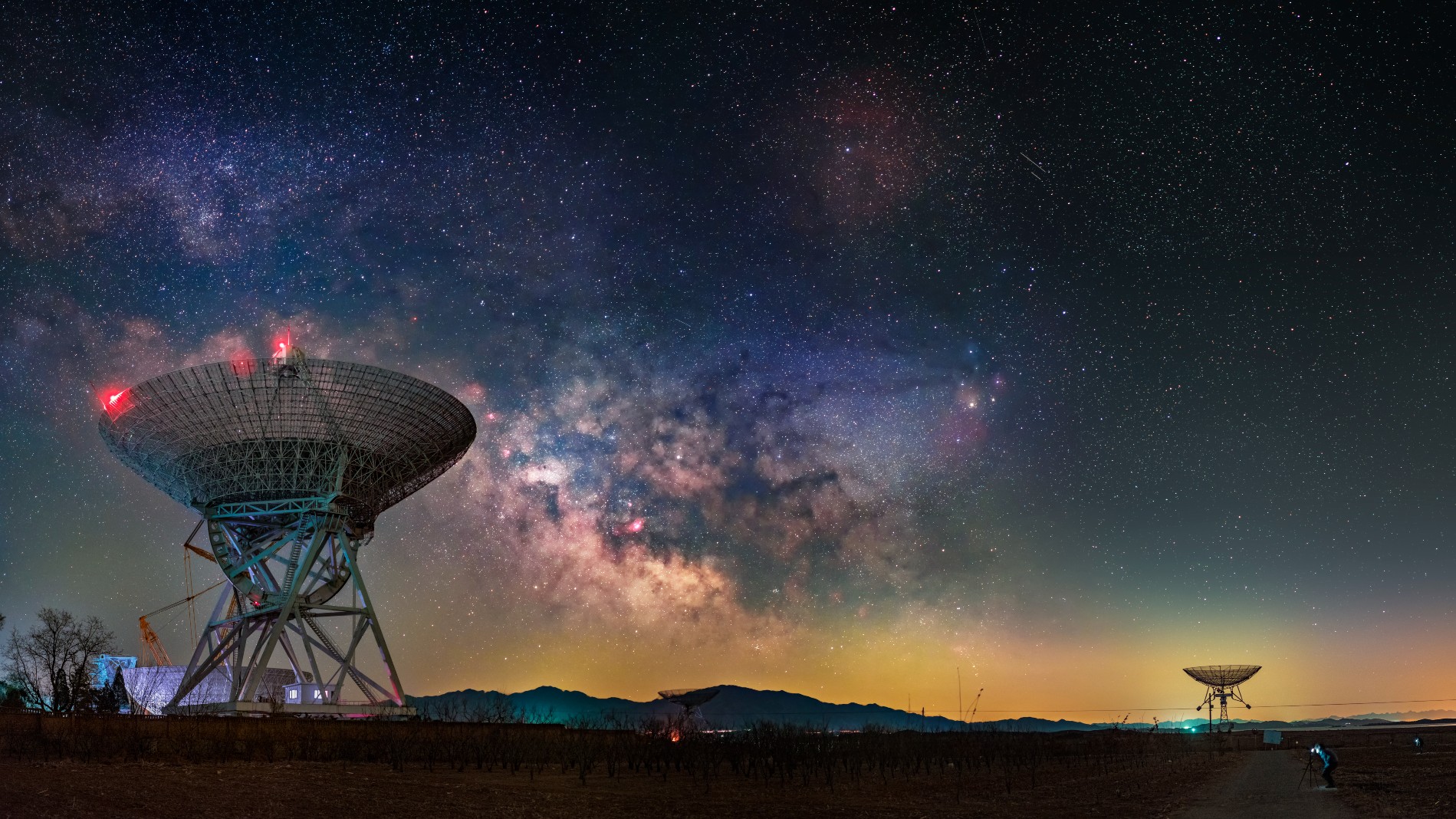8 possible alien 'technosignatures' detected around distant stars in new AI study
Eight signals from far-off stars probably aren't aliens, but the machine learning method that found them holds promise in the search for real extraterrestrials.

Using a new machine-learning algorithm, scientists have picked up eight extraterrestrial signals that seem to bear the hallmarks of technology.
The research, published Jan. 30 in the journal Nature Astronomy, doesn't claim to have really found proof of intelligent aliens; a brief follow-up search for the signals detected in the study turned up only silence. But the study authors say that using artificial intelligence is a promising way to search for extraterrestrial intelligence.
"I am impressed by how well this approach has performed on the search for extraterrestrial intelligence," study co-author Cherry Ng, an astronomer at the University of Toronto, said in a statement. "With the help of artificial intelligence, I'm optimistic that we'll be able to better quantify the likelihood of the presence of extraterrestrial signals from other civilizations."
The new technique uses what study lead author Peter Ma, an undergraduate at the University of Toronto, calls "semi-unsupervised learning." Machine learning can be supervised, using data labeled by humans in a way that makes it easier for the algorithm to make predictions, or unsupervised, by picking patterns out of large data sets entirely without direction. The semi-unsupervised method combines both. The researchers first trained the algorithm to tell the difference between human-caused signals that come from radio waves originating on Earth and radio signals that come from elsewhere. (Radio waves are common targets in the search for extraterrestrial intelligence, or SETI, because they can travel long distances through space.)
The researchers tested different algorithms to minimize false positives. They analyzed 150 terabytes of data from the Green Bank Telescope in West Virginia, covering observations of 820 stars near Earth. Then, they discovered eight previously overlooked signals from five stars located between 30 light-years and 90 light-years from Earth.
Scientists with Breakthrough Listen, a large SETI effort, said these signals had two features in common with signals that might be created by intelligent aliens.
"First, they are present when we look at the star and absent when we look away — as opposed to local interference, which is generally always present," Steve Croft, project scientist for Breakthrough Listen at the Green Bank Telescope, said in the statement. "Second, the signals change in frequency over time in a way that makes them appear far from the telescope."
Sign up for the Live Science daily newsletter now
Get the world’s most fascinating discoveries delivered straight to your inbox.
It's possible that these features could arise by chance, however, Ma warned. And before making any claims about far-flung alien life, the researchers would need to observe the same signals repeatedly. A short follow-up observation at the Green Bank Telescope did not turn up any signs of the signals.
The research team hopes to apply their algorithm to data from powerful radio telescopes, like MeerKAT in South Africa or the planned Next Generation Very Large Array, which will be distributed across North America.
"With our new technique, combined with the next generation of telescopes, we hope that machine learning can take us from searching hundreds of stars to searching millions," Ma said.

Stephanie Pappas is a contributing writer for Live Science, covering topics ranging from geoscience to archaeology to the human brain and behavior. She was previously a senior writer for Live Science but is now a freelancer based in Denver, Colorado, and regularly contributes to Scientific American and The Monitor, the monthly magazine of the American Psychological Association. Stephanie received a bachelor's degree in psychology from the University of South Carolina and a graduate certificate in science communication from the University of California, Santa Cruz.










